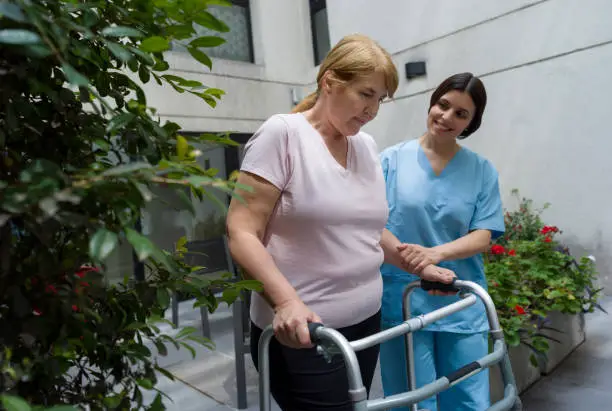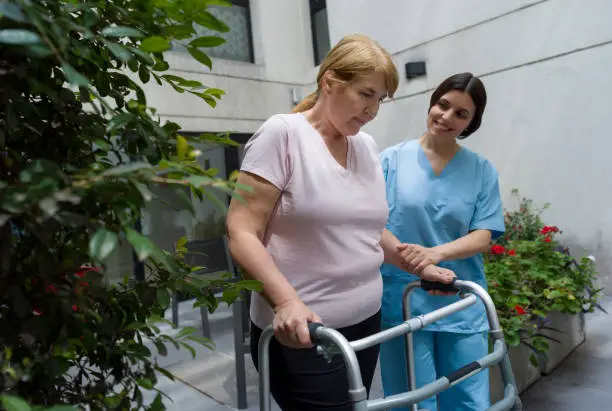Concerns arise as an HOA stops a nurse from patient visits. HOAs, in subdivisions, implement regulations for property occupants. HOA governance includes restrictions on nurse access in neighborhoods.
People who buy real estate within a HOA’s boundaries become members of the association automatically and must pay dues, also called HOA fees. Some associations have very strict rules about what members can do with their properties, while others may allow more freedom.
So if you are going to see someone who resides in a community under the control of a homeowners’ association (HOA), you must know their rules. By doing so, you can avoid tense disagreements with the HOA or, worse, legal disputes.
Did the HOA Nurse Break Any Access Rules?

The viral video on social media showed the HOA stopping the nurse from patient visitation. The nurse, riding a motorcycle, halted at the security checkpoint in the video.
After that, the security man told her she couldn’t go in with the bike because it was against their community rules. So she told him again that she was a nurse and that she was not going to park her bike outside and walk in. The security man asked if she wasn’t aware of the rule and didn’t let her in.
Does the HOA Have the Legal Right to Stop the HOA Nurse Access?
Yes, as confirmed by popular attorney Ugo Lord. He clarified that any vehicle registered in the United States can use public roads. However, since it wasn’t a public road, the HOA was legally right to stop the nurse from entering.
Private owners in gated communities have the authority to restrict allowed vehicle types. The HOA was therefore justified in refusing the HOA nurse access to ride in, even if her motorcycle was a legitimate form of transportation.
What Is the Jurisdiction of the Homeowner Association in California?
The Davis-Stirling Common Interest Development Act governs California Homeowners’ associations. It was created in 1985 and continuously updated.
They provide a general framework for how to set up an HOA nurse access, laws governing the management of community associations, and association powers and responsibilities. Establishing a homeowners association requires the creation of governing documents.
This includes the Articles of Incorporation, the Community Bylaws, and the Declaration of Covenants, Conditions, and Restrictions (CC&Rs). According to Civil Code Section 4080, Associations that run a common interest development can be formed as an unincorporated association or a non-profit corporation.
If you choose to incorporate, under Civil Code Section 4280, you must file your Articles of Incorporation with the California Secretary of State.
Incorporated or not, though, the California Corporations Code provides associations with the powers of non-profit mutual benefit associations.
Under this code, associations can adopt and amend bylaws, levy dues & fees, and enter into contracts, among other things. Although the Davis-Stirling Act offers comprehensive coverage of California HOA laws, associations can refer to the California Corporations Code when the former fails to address certain topics explicitly.
There are over 33,000 HOA’s in California. Of those, only three HOAs ban motorcycles– LWW being one of them. The remaining HOAs including Pebble Beach, Blackhawk, Auburn Lake Trails, and Lake of the Pines allow unrestricted motorcycle access. And, in a perfect world, there should be no restrictions on motorcycle access in LWW either.
What Is the Work of the Homeowner Association?
Homeowners associations (HOAs) generally formulate and implement rules about properties under their control. The people who live in the community form and run the association. One of the duties of the HOA is to provide rules and policies. The policies aim to maintain, protect, and improve the property values in the neighborhood with HOA nurse access.
The rules cover regulations about property cleanliness, condition, and repairs. In the event of a non-HOA, apartment building owners would have to work together to resolve issues like common areas for trash collection, building maintenance, and neighborhood regulations.
This could take up a lot of time and lead to arguments and disputes among owners. Also, HOA rules are typically created to assist in maintaining a uniform look for all of the properties that are part of the association’s zone. As a result, the properties will look better and meet higher standards, making them more desirable to the general public.
What Will Happen if Someone Breaks a HOA Nurse Access Rule?
If someone trespasses in a community where they own property, they cannot be held accountable. Nonetheless, it can be deemed trespassing if someone who isn’t a homeowner goes into the communal parts of the neighborhood. For example, the HOA board of directors has the authority to report a trespasser to the police if they are seen swimming in the pool.
Suppose a homeowner uses the pool at 6:00 p.m. even though the HOA only permits them to use it until 5:00 p.m. The individual is a homeowner, hence they are not trespassing. But if they break the bylaws, they could get penalized by paying a fine.
Being a part of these communities might have advantages because they frequently handle some of the more everyday aspects of homeownership, like gardening, snow removal, property upkeep, and utility management.
But bear in mind that, they have the power to impose restrictions on HOA nurse access by defining limits on what you are and are not allowed to do with your property just like the case of the nurse not being permitted to see her patient.

